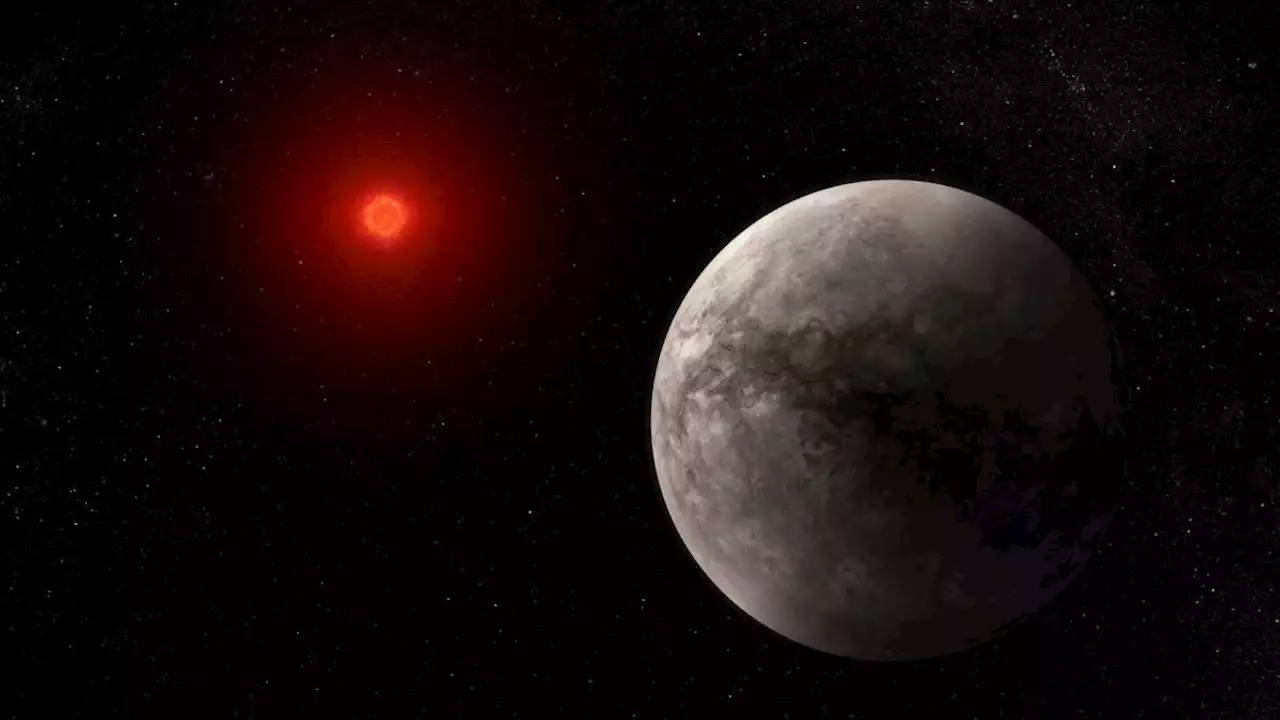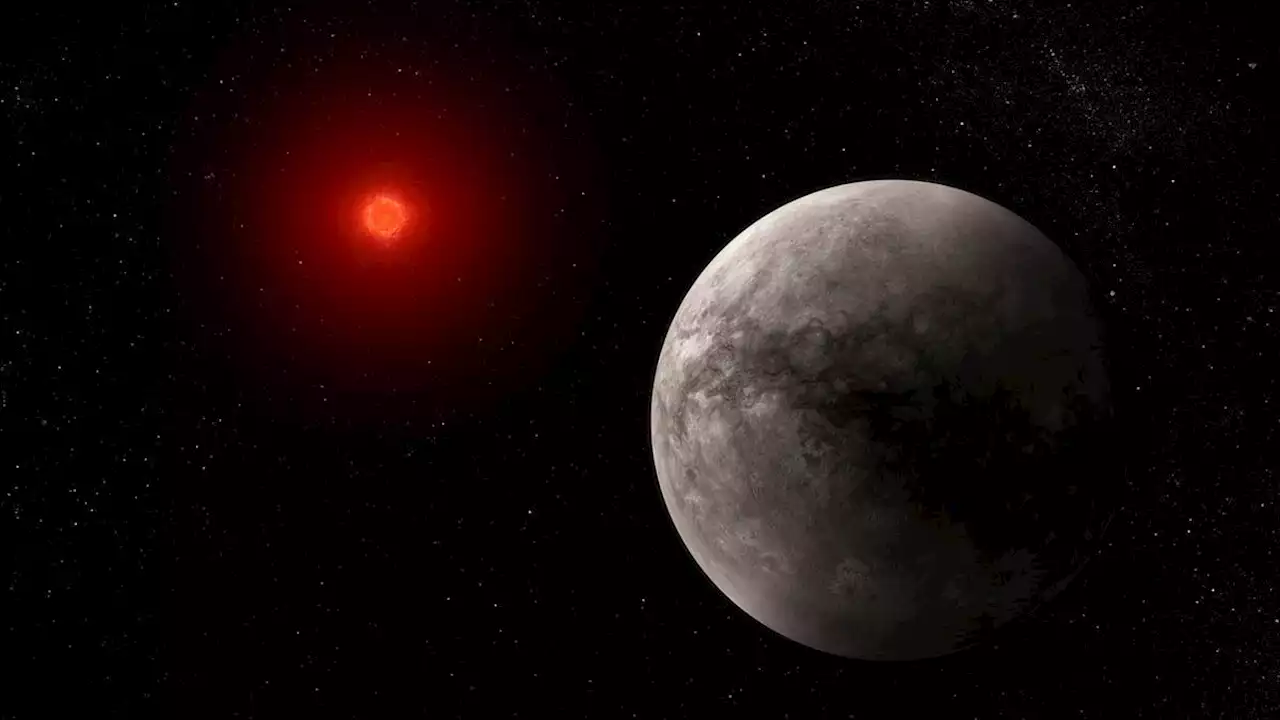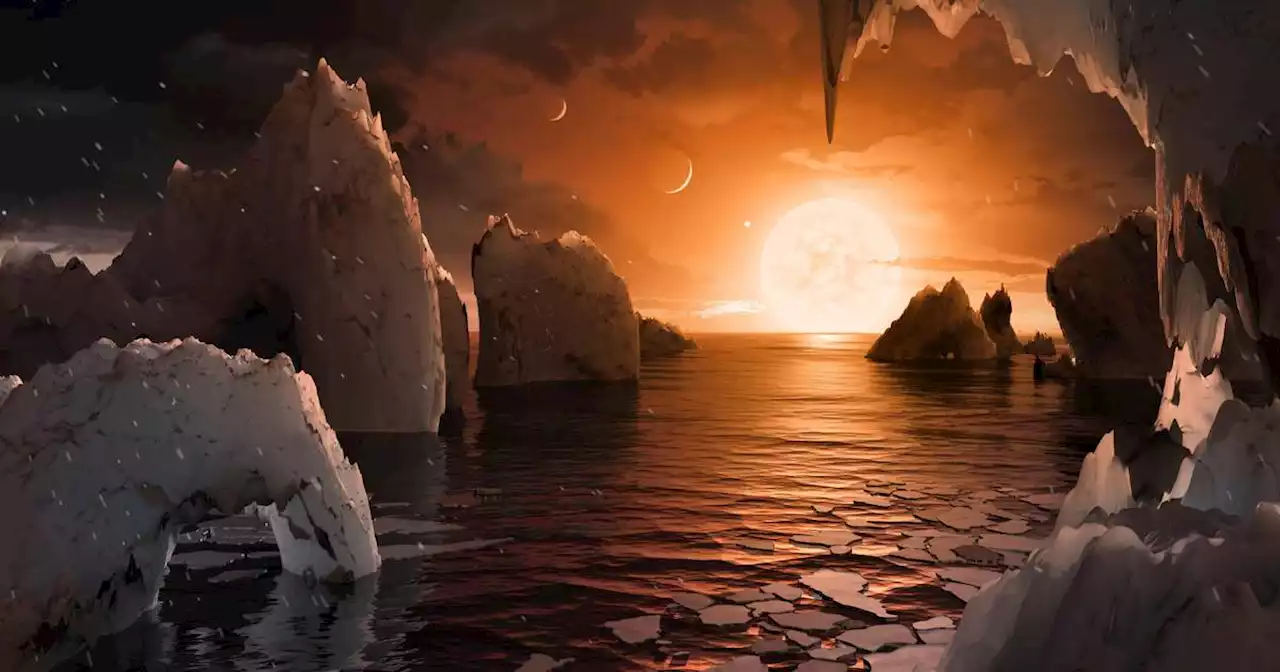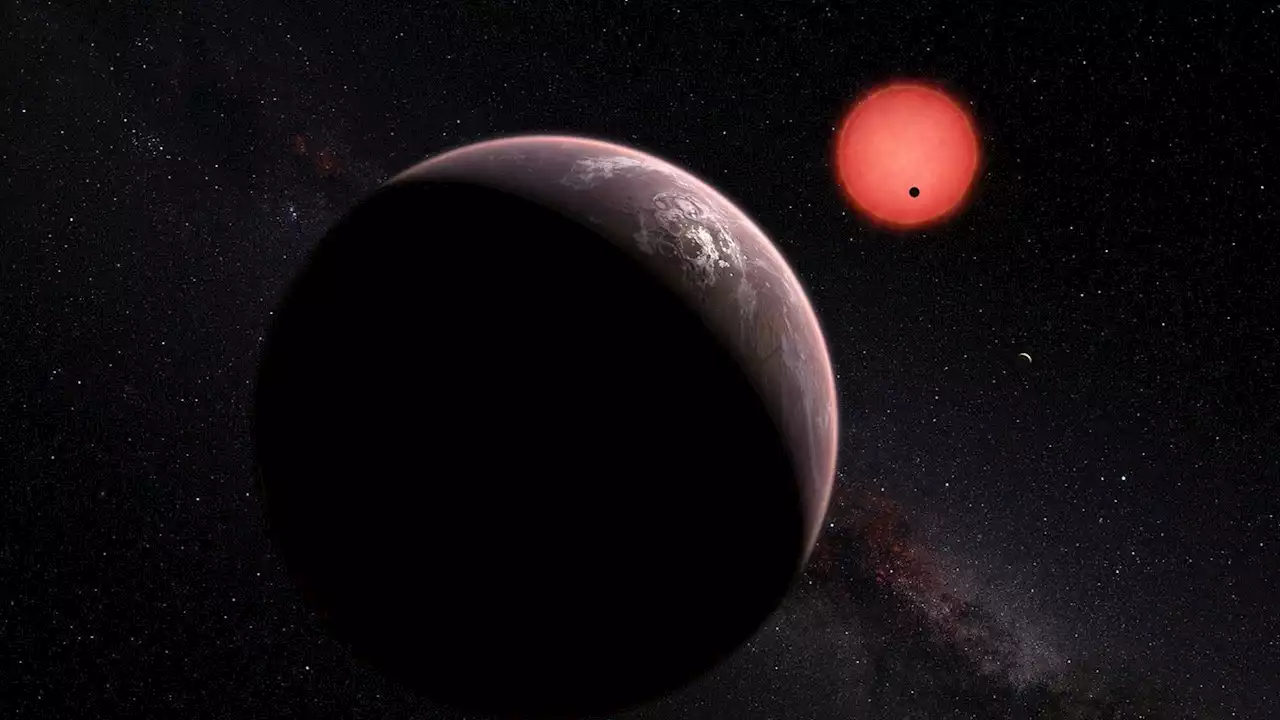The amount of infrared light coming from TRAPPIST-1 b suggests that the planet is devoid of any significant atmosphere. Acting as a giant touch-free thermometer, NASA’s James Webb Space Telescope has successfully measured heat radiating from the innermost of the seven rocky planets orbiting TRAPPIS
This illustration shows what the hot rocky exoplanet TRAPPIST-1 b could look like based on this work. TRAPPIST-1 b, the innermost of seven known planets in the TRAPPIST-1 system, orbits its star at a distance of 0.011 AU, completing one circuit in just 1.51 Earth-days. TRAPPIST-1 b is slightly larger than Earth, but has around the same density, which indicates that it must have a rocky composition.
The dayside brightness of TRAPPIST-1 b at 15 microns corresponds to a temperature of about 500 kelvins . This is consistent with the temperature assuming the planet is tidally locked , with a dark-colored surface, no atmosphere, and no redistribution of heat from the dayside to the nightside. TRAPPIST-1 b, the innermost planet, has an orbital distance about one hundredth that of Earth’s and receives about four times the amount of energy that Earth gets from the Sun. Although it is not within the system’s habitable zone, observations of the planet can provide important information about its sibling planets, as well as those of other M-dwarf systems.as there are stars like the Sun, and they are twice as likely to have rocky planets as stars like the Sun,” explained Greene.
Astronomers can subtract the brightness of the star from the combined brightness of the star and planet to calculate how much infrared light is coming from the planet’s dayside. This is then used to calculate the dayside temperature. One way to reduce the uncertainty is to measure the planet’s temperature. “This planet is tidally locked, with one side facing the star at all times and the other in permanent darkness,” said Pierre-Olivier Lagage from CEA, a co-author on the paper. “If it has an atmosphere to circulate and redistribute the heat, the dayside will be cooler than if there is no atmosphere.”
United States Latest News, United States Headlines
Similar News:You can also read news stories similar to this one that we have collected from other news sources.
 James Webb Space Telescope finds no atmosphere on Earth-like TRAPPIST-1 exoplanetThe observation represents Webb's first detection of 'any form of light' emitted by a rocky exoplanet.
James Webb Space Telescope finds no atmosphere on Earth-like TRAPPIST-1 exoplanetThe observation represents Webb's first detection of 'any form of light' emitted by a rocky exoplanet.
Read more »
 Webb Telescope Reveals Nearby Exoplanet Has No AtmosphereOn TRAPPIST-1b, it's a sweltering 446 degrees Fahrenheit—but only on one side.
Webb Telescope Reveals Nearby Exoplanet Has No AtmosphereOn TRAPPIST-1b, it's a sweltering 446 degrees Fahrenheit—but only on one side.
Read more »
 James Webb Demolishes Hubble's Record of Fitting the Most Galaxies in a Single ImageA new James Webb Space Telescope survey of the universe has already surpassed Hubble's most comprehensive one to date, and it's only in its first stage.
James Webb Demolishes Hubble's Record of Fitting the Most Galaxies in a Single ImageA new James Webb Space Telescope survey of the universe has already surpassed Hubble's most comprehensive one to date, and it's only in its first stage.
Read more »
 No atmosphere found at faraway Earth-sized world, study saysThe Webb Space Telescope has found no evidence of an atmosphere at one of the seven rocky, Earth-sized planets orbiting a nearby star.
No atmosphere found at faraway Earth-sized world, study saysThe Webb Space Telescope has found no evidence of an atmosphere at one of the seven rocky, Earth-sized planets orbiting a nearby star.
Read more »
 Solar System 2.0? James Webb data sheds new light on Earth-like planetAstronomers targeted the exoplanet TRAPPIST-1b for observations with the James Webb Space Telescope due to its resemblance to Earth.
Solar System 2.0? James Webb data sheds new light on Earth-like planetAstronomers targeted the exoplanet TRAPPIST-1b for observations with the James Webb Space Telescope due to its resemblance to Earth.
Read more »
 No atmosphere found at faraway Earth-sized world, study saysThe Webb Space Telescope has found no evidence of an atmosphere at one of the seven rocky, Earth-sized planets orbiting a nearby star.
No atmosphere found at faraway Earth-sized world, study saysThe Webb Space Telescope has found no evidence of an atmosphere at one of the seven rocky, Earth-sized planets orbiting a nearby star.
Read more »
